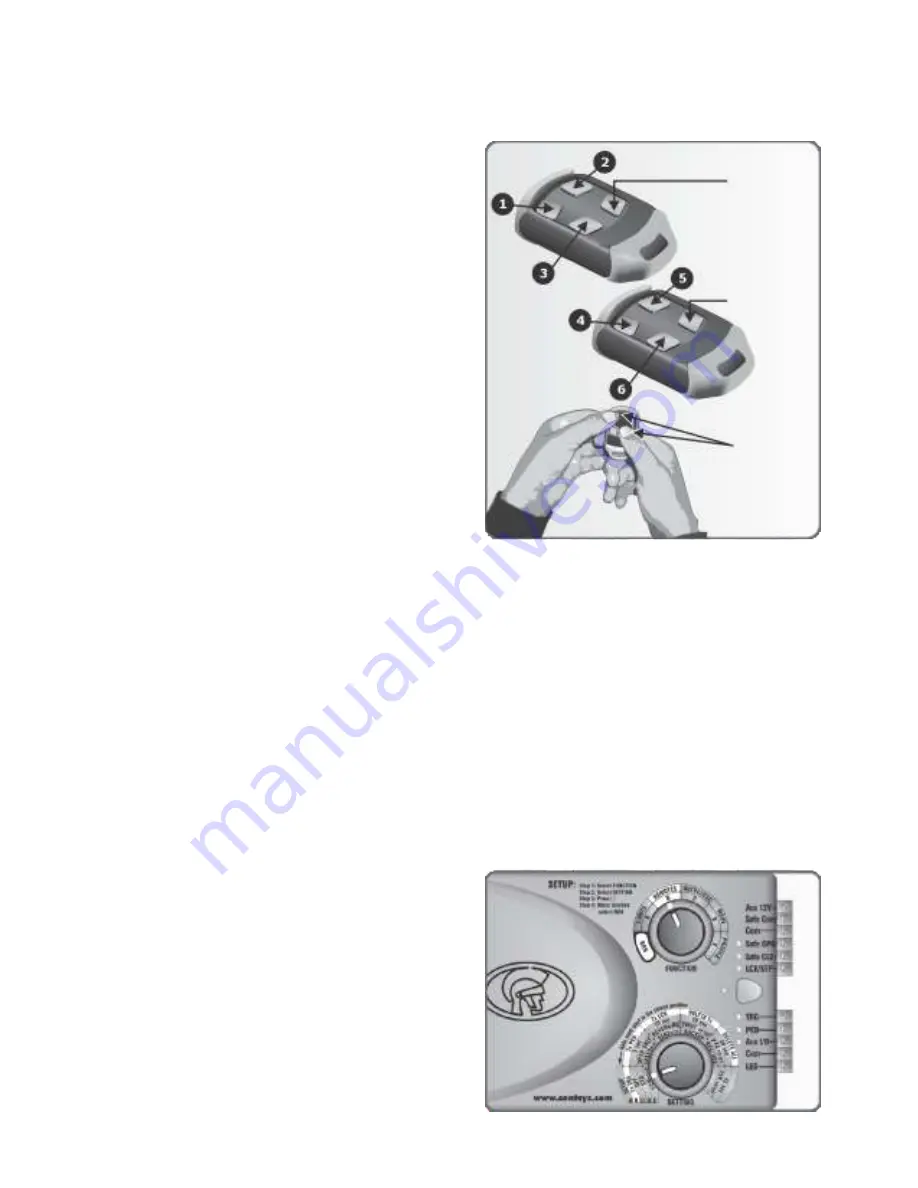
FIGURE 94.
page 62
You can also artificially increase the number
of buttons by using a two-button
combination. One of the buttons is used as a
Shift button to allow the other buttons to be
used again in combination with this button.
Press and hold the allocated Shift button
and then press one of the other buttons to
create a new button. The Shift button
cannot be used as a button on its own - it
must always be used in combination with
another button.
Use of the Shift button principle allows a
three-button transmitter to gain an extra
button and operate four functions and a
four-button transmitter gains two extra
buttons and can operate six functions.
This is quite handy if you’d like to control
additional devices from a single multi-button
remote control, for example your garage
doors if they are equipped with CENTURION
code-hopping receivers.
However, it’s important to note that the other devices cannot be activated with the new
Shift button, only the
D2 Turbo
(and other operators that are equipped with an onboard
receiver) is able to recognise the Shift button signals.
Using the shift key principle also prevents you from enabling functions like Holiday
Lockout Mode by accident. This is because you have to use both hands to press the
two-button combination.
At any stage remote controls can be selectively added or deleted within the system.
To selectively delete a remote control, the remote control must be available.
Please refer to the section, 'Deleting Specific Remote Controls' on page 64.
22.2. Adding code-hopping remote controls
To add a code-hopping remote control to the onboard receiver and assign a button to any
specific function as described above, please follow the steps below:
Step 1:
Rotate the Function Dial to the
REMOTES position (B).
Step 2:
Rotate the Setting Dial to the
desired selection along the ‘B’ row of
options.
FIGURE 95.
Shift button
Shift button
Press and
hold the
‘fourth’ button
as a Shift button
together with
button 1, 2 or
3 to operate
4, 5 or 6
















































